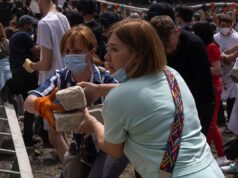we’ll explore why the filmmakers used real skeletons, what impact this had on the cast and crew, and how this unsettling fact has shaped the legacy of the movie. We will also dive into some lesser-known facts about the film, provide answers to common questions, and discuss the ethical implications of this choice. Stay tuned as we uncover the bone-chilling details behind Poltergeist’s spookiest scenes.
Ethics Of Using Real Skeletons In Filmmaking
The use of real skeletons in filmmaking, particularly in iconic movies like the 1982 horror classic Poltergeist, raises significant ethical concerns. While this practice may have been seen as a cost-effective or practical solution in past decades, it comes with moral implications that warrant examination. The decision to use real human remains, rather than props or artificial skeletons, pushes the boundaries of what is acceptable in the pursuit of realism in art.
Respect for the Deceased: One of the primary ethical issues revolves around the respect (or lack thereof) for human remains. In many cultures, human bodies are treated with reverence and respect, even after death. The use of real skeletons for entertainment, particularly in a horror setting, can be seen as a violation of this respect. These skeletons were once living people with families and lives, and their remains deserve to be treated with dignity. Displaying them in scenes designed to shock and terrify audiences could be viewed as exploitation of the dead.
Informed Consent: Informed consent is another important aspect of the discussion. It is unclear whether the individuals whose skeletons were used in movies like Poltergeist had given consent, either during their lifetime or through their families, for their remains to be used in such a manner. In cases where human remains are donated for medical or educational purposes, there are often clear guidelines and permissions in place. However, using skeletons for entertainment may not fall under the same ethical standards, especially if there was no consent involved.
Financial and Practical Considerations: One reason real skeletons were used in the past is due to financial constraints. As shocking as it may seem, real skeletons were often cheaper and more readily available than creating convincing artificial ones. This was the case during the making of Poltergeist, when filmmakers sought to achieve the highest level of authenticity for the film’s horror scenes. However, should financial considerations outweigh ethical concerns? Many would argue that the pursuit of realism or budgetary limitations does not justify using real human remains in this way.
The Evolution of Ethical Standards: Today, technological advances allow filmmakers to create realistic props without resorting to the use of actual human remains. As society’s understanding of ethical issues has evolved, such practices are no longer acceptable in most film productions. Instead, respect for human dignity and the importance of consent are now prioritized in the entertainment industry, reflecting a broader shift in cultural values.
while the use of real skeletons may have been a practical solution in past filmmaking, the ethical implications cannot be overlooked. As audiences become more aware of these practices, they expect greater responsibility from filmmakers when it comes to respecting human remains and maintaining ethical standards in their craft.
Memorable Scenes Featuring Real Skeletons In Poltergeist (1982)
The 1982 movie Poltergeist is celebrated for its chilling atmosphere, gripping storyline, and groundbreaking special effects. However, what truly sets this horror classic apart is the real human skeletons used during some of its most iconic and memorable scenes. These moments have become the stuff of cinematic legend, not only because of their eerie impact on viewers but also due to the unsettling fact that real skeletons were used in place of props.
The Infamous Swimming Pool Scene
One of the most well-known scenes featuring real skeletons occurs when Diane Freeling, played by JoBeth Williams, is dragged into a partially built swimming pool during a storm. As she struggles to escape the muddy, rain-soaked pit, several skeletons emerge from the water, adding a horrifying twist to an already tense moment. The realism of the skeletons, which later turned out to be actual human remains, intensifies the shock and terror of the scene. This scene became iconic, not only for its visual impact but also because the use of real skeletons created a haunting authenticity that left a lasting impression on both the cast and the audience.
The Gruesome Climax
Another unforgettable moment featuring real skeletons comes toward the film’s climax, where the Freeling family’s house is overrun by paranormal forces. As the walls crumble and the ground shakes, more skeletons rise from the earth, surrounding the family in a terrifying, chaotic display. The decision to use real skeletons in this scene adds an extra layer of horror. Instead of seeing fake plastic bones, audiences are confronted with a morbid reality that heightens the overall intensity of the movie’s finale.
Behind-the-Scenes Revelations
It wasn’t until after the film’s release that it was revealed to the cast and crew—and subsequently, the public—that real skeletons had been used in these scenes. JoBeth Williams and other actors expressed shock and discomfort upon learning the truth, which has since become one of the most enduring and controversial aspects of Poltergeist. This revelation led to speculation about the so-called “Poltergeist Curse,” where several cast members died under mysterious circumstances after the film’s release.
these memorable scenes featuring real skeletons contribute to Poltergeist’s enduring legacy in the horror genre. The use of actual human remains gave the film an uncanny sense of realism that continues to disturb and fascinate audiences to this day.
How This Revelation Affects The Legacy Of Poltergeist
The revelation that real skeletons were used in the 1982 movie Poltergeist has significantly impacted the film’s legacy, elevating it from a typical horror movie to a cultural phenomenon steeped in mystery, controversy, and fear. While the film is remembered for its chilling storyline and special effects, this unsettling fact has cast a shadow over its production, fueling conversations about ethics in filmmaking and adding to its eerie reputation.
1. Heightened Horror and Authenticity: The discovery that real human skeletons were used in some of Poltergeist’s most iconic scenes, such as the infamous swimming pool scene, gave the film a deeper, more authentic sense of horror. Audiences were already frightened by the supernatural plot, but learning that actual human remains were present on set made the movie even more terrifying. This unsettling reality contributed to the film’s success, as it blurred the lines between fiction and reality, drawing viewers into a world that felt genuinely haunted. The use of real skeletons became a talking point among fans, solidifying Poltergeist as a legendary entry in the horror genre.
2. The “Poltergeist Curse”: Perhaps the most notorious consequence of this revelation was the rise of the so-called “Poltergeist Curse.” Following the film’s release, a series of tragic and untimely deaths among the cast, including young stars Dominique Dunne and Heather O’Rourke, led to speculation that the film was cursed. Many fans and media outlets have linked these deaths to the decision to use real skeletons during filming, suggesting that the use of human remains might have triggered supernatural consequences. While the curse remains a topic of debate, it has undoubtedly enhanced the film’s chilling legacy, making it a source of fascination beyond its narrative.
3. Ethical Concerns and Hollywood Practices: The use of real skeletons in Poltergeist also brought attention to ethical concerns in filmmaking. The fact that these human remains were used for entertainment, without clear consent or regard for the deceased, sparked criticism. Today, the industry has evolved, and such practices would likely face scrutiny and condemnation. The ethics of using real skeletons continue to be a subject of discussion in film history classes and among horror enthusiasts.
4. Lasting Impact on Pop Culture: Decades after its release, Poltergeist remains a cultural touchstone, and the revelation of real skeletons only adds to its mystique. This chilling fact has contributed to the film’s longevity in pop culture, cementing it as a film that is not only entertaining but also shrouded in real-world fear and controversy.
Summary
The use of real skeletons in Poltergeist adds an eerie layer to an already terrifying film. While it may have been a practical decision for the filmmakers, it left a lasting impact on the cast, crew, and audience. This revelation has become a critical part of the movie’s legacy, sparking discussions about ethics, authenticity, and the supernatural. Whether you view it as a chilling fact or a piece of horror history, one thing is clear: Poltergeist will forever be remembered not just for its spooky story, but for the real skeletons that brought it to life.
FAQ
What is the Poltergeist Curse?
The Poltergeist Curse refers to a series of tragic events and deaths among the cast, believed by some to be connected to the film’s use of real skeletons.
Are real skeletons still used in films today?
No, the use of real skeletons is no longer a common practice in Hollywood due to ethical concerns and the availability of realistic props.
Did using real skeletons impact the film’s legacy?
Yes, the use of real skeletons has become one of the most talked-about aspects of Poltergeist, contributing to its eerie reputation.














